Sleep disorders not only impede on a person’s sleep, but they can have serious and negative health consequences as well if they are not managed or controlled. Examples of sleep disorders include insomnia, sleep apnea and parasomnia. Over this last year, more information arose in regards to sleep disorders – how they are linked, how they can affect health and how to properly manage them.
Here are Bel Marra Health’s top sleep disorder news stories, compiled to give you easy access to the breakthroughs regarding sleep disorders. We hope this provides you with vital information to combat your own possible sleep disorders – even if that means finally speaking with your doctor about your restless nights.
Health Risks of Sleep Disorders: 40% of Canadians affected by sleep disorders, leads to serious health risks
Advertisement
According to researchers, many health issues can lead to sleep disorders, which further health risks.
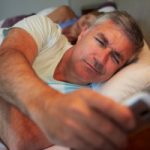 Research has found that nearly 40 percent of Canadians are affected by sleep disorders in their lifetime, which can lead to serious health consequences. Contributors to sleep disorders include long working hours, social and family responsibilities, irregular shift work and illness. Psychological disorders, treated or untreated can also contribute to sleep disorders, as the study found.
Research has found that nearly 40 percent of Canadians are affected by sleep disorders in their lifetime, which can lead to serious health consequences. Contributors to sleep disorders include long working hours, social and family responsibilities, irregular shift work and illness. Psychological disorders, treated or untreated can also contribute to sleep disorders, as the study found.
Dr. Frank Ryan from the University of British Columbia Hospital suggests caffeine and energy drinks can temporarily boost energy and alertness, but notes, “The problem is over time, you incur a sleep debt which you can never fully repay. This is probably going to have long-term health consequences. That’s the risk.” Learn More
History of Sleep Disorders: In ‘paleo sleep’ our ancestors slept less but without sleep disorders
Researchers found that the prevalence of sleep disorders has grown in recent years.
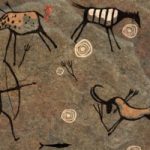 ‘Paleo sleep’ consisted of less sleep but did not come with any sleep disorders, unlike today where we’re concerned about getting enough sleep and might now have to take up regular naps. Paleo sleep refers to our ancestors, the hunter-gatherers. In today’s world sleep disorders and sleep deprivation are seen as a global problem, but if we take note of our ancestor’s habits, we will find that they slept less without sleep disorders.
‘Paleo sleep’ consisted of less sleep but did not come with any sleep disorders, unlike today where we’re concerned about getting enough sleep and might now have to take up regular naps. Paleo sleep refers to our ancestors, the hunter-gatherers. In today’s world sleep disorders and sleep deprivation are seen as a global problem, but if we take note of our ancestor’s habits, we will find that they slept less without sleep disorders.
The latest findings were published in Current Biology and revealed three ancient groups that didn’t get any more sleep than we do in modern-day society. Researchers found these ancient people slept on average for 6.5 hours – much below the recommended eight hours we hear about today. Furthermore, these individuals didn’t take regular naps, as many of us do, and their sleep schedules were comparable to ours today – stay up late and wake up early. Learn More
Parasomnia and Sleep Apnea: Parasomnia sleep disorders and link with obstructive sleep apnea
A study found that patients with obstructive sleep apnea experience “parasomnia” symptoms.
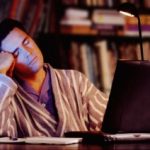 With 40 million Americans suffering from sleep disorders, research into sleep behavior is constant, and in recent years experts have been able to link parasomnia sleep disorders with sleep apnea.
With 40 million Americans suffering from sleep disorders, research into sleep behavior is constant, and in recent years experts have been able to link parasomnia sleep disorders with sleep apnea.
Parasomnia sleep disorder is a group of abnormal behaviors that can take place when a person in sleeping. Some sleep disorder parasomnias include sleep-related eating disorder, nightmares, sleep walking, sleep paralysis and sleep aggression.
Sleep includes two different states; rapid eye movement sleep or REM, and non-rapid eye movement or NREM. These two states alternate throughout the sleep cycle. Parasomnia can take place in any state of sleep, as well as during a sleep-wake transition. They can also be classified into two syndromes. For instance, sleep disorders of arousal tend to happen during NREM. REM parasomnias are more likely to take place during the later half of the sleep period when REM sleep is most abundant. Learn More
Sleep and Erectile Dysfunction: Depression, sleep apnea and poor sleep quality raise erectile dysfunction risk
Researchers found that depression and poor sleep with sleep apnea increases erectile dysfunction.
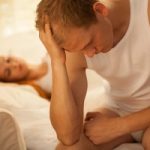 Depression, sleep apnea and sleep quality have been found to increase the risk of erectile dysfunction. Sleep apnea is a condition where a person may stop breathing throughout the night and be abruptly awakened to regain their breath. This condition can contribute to numerous health concerns, including diabetes and hypertension. Furthermore, sleep apnea can impair sleep, which is also vital for overall good health.
Depression, sleep apnea and sleep quality have been found to increase the risk of erectile dysfunction. Sleep apnea is a condition where a person may stop breathing throughout the night and be abruptly awakened to regain their breath. This condition can contribute to numerous health concerns, including diabetes and hypertension. Furthermore, sleep apnea can impair sleep, which is also vital for overall good health.
Erectile dysfunction is a common problem that affects men. It results in a lack of sexual function and has been tied with sleep apnea. When men sleep testosterone is being produced but in sleep apnea patients this does not occur. The lack of oxygen brought on by sleep apnea halts the production of testosterone, which in turn can contribute to erectile dysfunction.
In the latest research 713 patients with depressive symptoms and sleep problems were shown to have erectile dysfunction as well. The findings of the study suggest that erectile dysfunction may be improved if depressive symptoms are treated along with sleep apnea. Learn More
Sleep and Mental Health: Mood changes worsened by sleep interruptions more than lack of sleep
A new study revealed that sleep interruptions may be to blame for your bad mood.
Advertisement
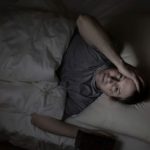 According to a recent study, Bad mood has been linked with sleep interruptions more than lack of sleep. The study was done at Johns Hopkins Medicine where researchers found that waking up throughout the night has a negative impact on mood more than individual’s getting a shorter amount of non-interrupted sleep.
According to a recent study, Bad mood has been linked with sleep interruptions more than lack of sleep. The study was done at Johns Hopkins Medicine where researchers found that waking up throughout the night has a negative impact on mood more than individual’s getting a shorter amount of non-interrupted sleep.
As part of the study, 62 healthy men and women were exposed to either three nights of forced awakenings, three nights of delayed bedtimes or three nights of uninterrupted sleep.
Those subjected to forced awakening and delayed bedtime showed lower positive moods and higher negative mood after one night. Results were calculated by participants answering a survey where they were asked to rate their level of emotions felt such as cheerfulness or anger. Learn More
